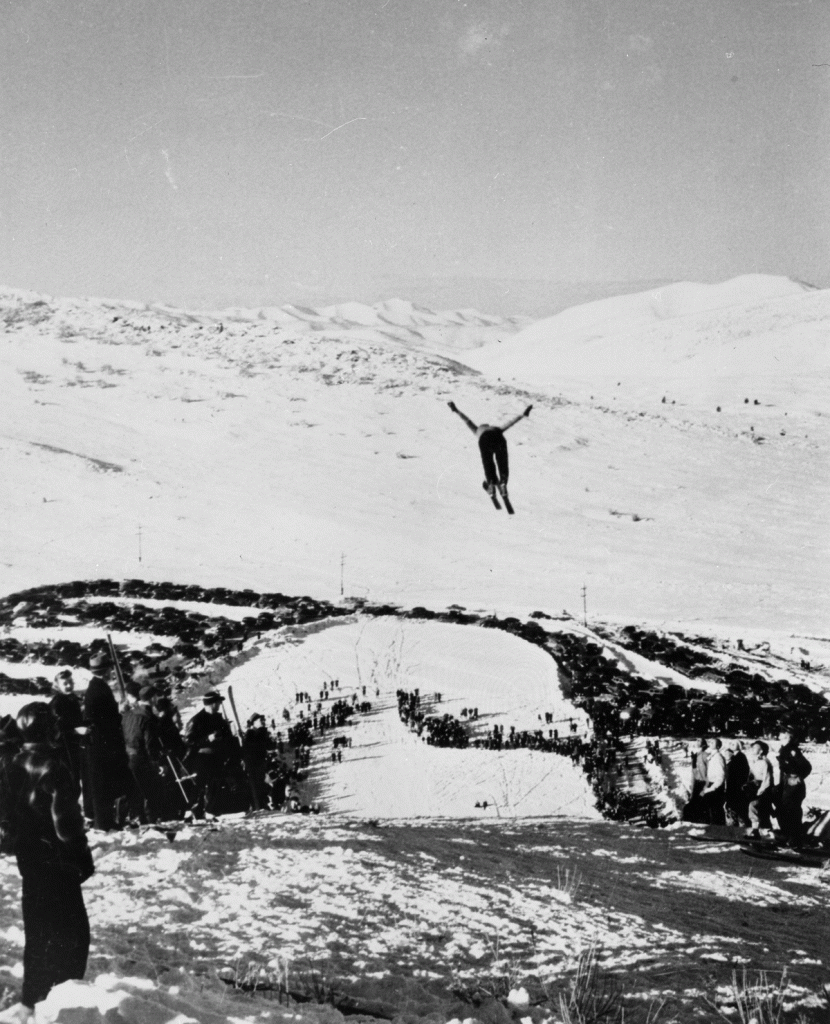February 22, 1934 was the date of the annual Utah State Ski Meet, where professional and amateur skiers competed for the top state titles. The meet took place at the Ecker Hill ski jump, built by the Utah Ski Club in late 1928 and first used in February 1929. The jump was located in what is now the Pinebrook neighborhood and was accessible by the Lincoln Highway and the Denver & Rio Grande Railroad, which stopped at Gorgoza station on its route between Salt Lake City and Park City. Due to the convenient location and the popularity of the sport, an estimated 5,000-10,000 spectators would come to the state tournaments each year.
Among the regular competitors was a 24-year old named Calmar Andreasen. He was born in Norway but lived in Salt Lake City and was the Utah state amateur champion. Andreasen had won this title when he jumped 98 feet in February 1929. In March 1930 and February 1931, he reaffirmed his standing with winning jumps of 114 and 120 feet respectively. Even in 1932, Andreasen out-jumped all other skiers; unfortunately, he placed second due to a fall on his first jump, resulting in a lower overall point score.

Credit: The Park City Historical Society and Museum, Mansel Smith Collection
At the 1934 event, Andreasen made a successful trial jump from the new professional 300-foot runway, making a perfect landing after a 160-foot leap. However, on his first official attempt, he appears to have misjudged his takeoff. Andreasen struck the ground on his shoulder and bounced over the edge of the hill before rolling more than 300 feet down the incline. According to several witnesses, Andreasen went “over the takeoff and [landed] upside down on the knoll… As he tumbled… to the bottom, it was plain to see that he was badly hurt.” Onlookers saw that “Calmar… got in the ‘backseat’ and couldn’t get forward again.” An ambulance was called to take him to the hospital in Salt Lake City but Andreasen passed away en route within an hour of the accident. According to the death certificate, the cause of death was “cerebral hemorrhage and rupture of lung” (punctured by a broken rib). He was survived by his widow, parents and six brothers and sisters.
It was well understood that ski jumping was a risky sport, especially at a time when protective equipment was not used and medical care was rudimentary. In the several years before, many competitors, including Andreasen, had fallen while jumping; some falls ended in unconsciousness and hospitalization. Despite this tragedy and the ongoing risks, competitions continued at Ecker Hill, though its use declined after 1949; new jumping hills were safer for the longer jump distances resulting from improved ski jumping equipment and techniques. The Ecker Hill jump was eventually abandoned in the 1960s. Today, very little evidence of its existence remains, but Andreasen and “the other daring men who jumped at Ecker Hill” are remembered in a plaque at the base of the hill.
Sources:
Park Record, February 3, 1928
Park Record, March 1, 1929
“Ecker Hill,” Utah History Encyclopedia, Utah Education Network, http://www.uen.org/utah_history_encyclopedia/e/ECKER_HILL.html